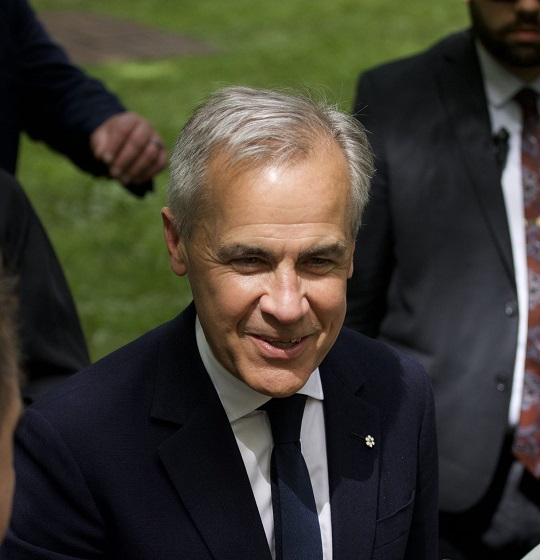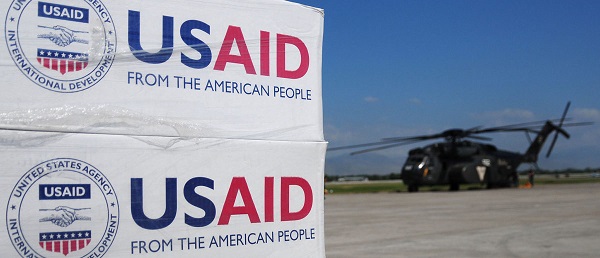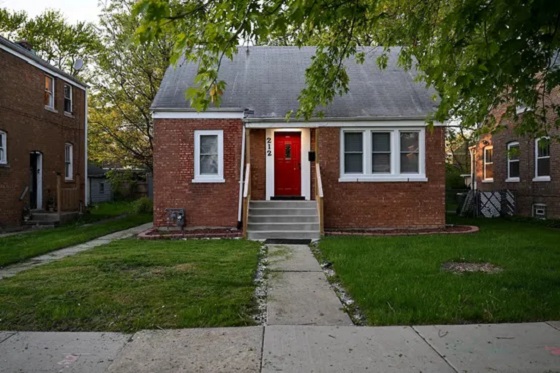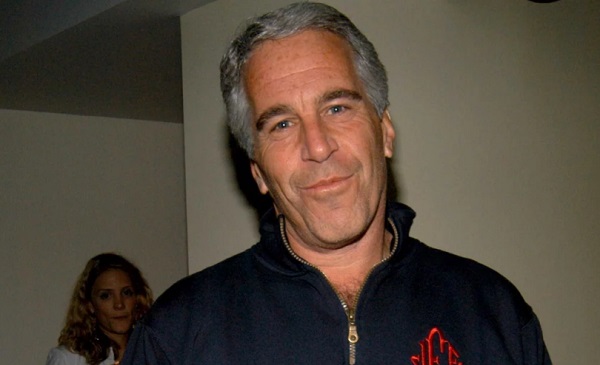Economy
Scott Moe tells Trudeau he will stop collecting carbon tax unless Saskatchewan gets tax break

From LifeSiteNews
‘I cannot accept the Federal Government giving an affordability break to people in one part of Canada, but not here,’ the Saskatchewan premier said in an announcement on Monday.
Saskatchewan Premier Scott Moe put Prime Minister Justin Trudeau on notice today by saying his province will stop collecting a federal carbon tax on natural gas used to heat homes come January 1, 2024, unless it gets a similar tax break that Atlantic Canadian provinces just got from the federal government for heating their homes.
“So, the Prime Minister chose to make life more affordable for families in one part of the country while leaving Saskatchewan families out in the cold. How is that fair to families here in our province, where affordability is also an issue, where winters are cold, and where most of us use natural gas to stay warm?” said Moe in a video posted today to X (formerly Twitter).
“I cannot accept the Federal Government giving an affordability break to people in one part of Canada, but not here. So today I am calling on the Federal Government to offer the same carbon tax exemption to Saskatchewan families by extending it to all forms of home heating, not just heating oil.”
Moe said that Trudeau should give Saskatchewan a tax break, as this is only “fair” for “Saskatchewan and Canadian families.”
“Hopefully that exemption will be provided soon,” he said.
Moe then turned up the heat on Trudeau. He said that if Trudeau does not give his province the same break as Atlantic provinces, “effective January 1st, Sask Energy will stop collecting and submitting the carbon tax on natural gas, effectively providing Saskatchewan residents with the very same exemption that the federal government is giving heating oil in Atlantic Canada.”
Moe said that while the federal government may say what he is contemplating doing is “illegal and that you simply cannot choose to collect and pay your taxes,” which he added in “most” cases he would “agree with,” it’s the “federal government that has created two classes of taxpayer, by providing an exemption for heating with an exemption that really only applies in one part of the country and effectively excludes Saskatchewan.”
Moe said that his job as premier is to make sure “Saskatchewan residents are treated fairly and equally with our fellow Canadians in other parts of the country.”
“And that’s what I am doing today,” he added.
Moe said the “real solution” for the entire issue with high heating bills thanks to a carbon tax is for the “federal government to scrap the entire carbon tax on everyone and everything.”
As it currently stands, provinces collect the carbon tax on behalf of the federal government.
Late last week, amid dismal polling numbers that show his government will be defeated in a landslide by the Conservative Party come the next election, Trudeau announced he was pausing the collection of the carbon tax on home heating oil in Atlantic Canadian provinces for three years.
However, while making the announcement, Trudeau said the goal of the pause was to encourage locals to ditch their home heating oil units for electric heat pumps and said his government would be giving out free pumps to many homeowners.
LifeSiteNews reported earlier this month how Trudeau’s carbon tax is costing Canadians hundreds of dollars annually, as government rebates it gives out are not enough to compensate for high fuel costs.
As it stands now, Canadians who live in a province that does not have their own carbon tax scheme fall under the federal carbon pricing scheme and pay $65 per tonne. The Trudeau government has a goal of $170 per tonne by 2030, however.
This will increase the costs of everything. A recent report revealed that a carbon tax of more than $350 per tonne is needed to reach Trudeau’s net zero goals by 2050.
Moe and Alberta Premier Smith blast Trudeau as ‘danger’ to confederation
Over the weekend, both Moe and Alberta Premier Danielle Smith, who also opposes the carbon tax, blasted Trudeau as being a danger to the confederation, after his Rural Economic Development Minister Gudie Hutchings said those provinces “need to elect more Liberals in the Prairies so that we can have that conversation as well.”
Smith and Moe said that Hutchings’ comments show the carbon tax has nothing to do with the environment but is all about “politics.”
Saskatchewan is not alone in opposing Trudeau’s carbon tax and “net zero” environmental goals.
Both it and Alberta have repeatedly promised to place the interests of their people above the Trudeau government’s “unconstitutional” demands while consistently reminding the federal government that their infrastructures and economies depend upon oil, gas, and coal.
The Trudeau government’s current environmental goals – in lockstep with the United Nations’ “2030 Agenda for Sustainable Development” – include phasing out coal-fired power plants, reducing fertilizer usage, and curbing natural gas use over the coming decades.
Automotive
Federal government should swiftly axe foolish EV mandate

From the Fraser Institute
Two recent events exemplify the fundamental irrationality that is Canada’s electric vehicle (EV) policy.
First, the Carney government re-committed to Justin Trudeau’s EV transition mandate that by 2035 all (that’s 100 per cent) of new car sales in Canada consist of “zero emission vehicles” including battery EVs, plug-in hybrid EVs and fuel-cell powered vehicles (which are virtually non-existent in today’s market). This policy has been a foolish idea since inception. The mass of car-buyers in Canada showed little desire to buy them in 2022, when the government announced the plan, and they still don’t want them.
Second, President Trump’s “Big Beautiful” budget bill has slashed taxpayer subsidies for buying new and used EVs, ended federal support for EV charging stations, and limited the ability of states to use fuel standards to force EVs onto the sales lot. Of course, Canada should not craft policy to simply match U.S. policy, but in light of policy changes south of the border Canadian policymakers would be wise to give their own EV policies a rethink.
And in this case, a rethink—that is, scrapping Ottawa’s mandate—would only benefit most Canadians. Indeed, most Canadians disapprove of the mandate; most do not want to buy EVs; most can’t afford to buy EVs (which are more expensive than traditional internal combustion vehicles and more expensive to insure and repair); and if they do manage to swing the cost of an EV, most will likely find it difficult to find public charging stations.
Also, consider this. Globally, the mining sector likely lacks the ability to keep up with the supply of metals needed to produce EVs and satisfy government mandates like we have in Canada, potentially further driving up production costs and ultimately sticker prices.
Finally, if you’re worried about losing the climate and environmental benefits of an EV transition, you should, well, not worry that much. The benefits of vehicle electrification for climate/environmental risk reduction have been oversold. In some circumstances EVs can help reduce GHG emissions—in others, they can make them worse. It depends on the fuel used to generate electricity used to charge them. And EVs have environmental negatives of their own—their fancy tires cause a lot of fine particulate pollution, one of the more harmful types of air pollution that can affect our health. And when they burst into flames (which they do with disturbing regularity) they spew toxic metals and plastics into the air with abandon.
So, to sum up in point form. Prime Minister Carney’s government has re-upped its commitment to the Trudeau-era 2035 EV mandate even while Canadians have shown for years that most don’t want to buy them. EVs don’t provide meaningful environmental benefits. They represent the worst of public policy (picking winning or losing technologies in mass markets). They are unjust (tax-robbing people who can’t afford them to subsidize those who can). And taxpayer-funded “investments” in EVs and EV-battery technology will likely be wasted in light of the diminishing U.S. market for Canadian EV tech.
If ever there was a policy so justifiably axed on its failed merits, it’s Ottawa’s EV mandate. Hopefully, the pragmatists we’ve heard much about since Carney’s election victory will acknowledge EV reality.
Economy
The stars are aligning for a new pipeline to the West Coast

From Resource Works
Mark Carney says another pipeline is “highly likely”, and that welcome news.
While attending this year’s Calgary Stampede, Prime Minister Mark Carney made it official that a new pipeline to Canada’s West Coast is “highly likely.”
While far from a guarantee, it is still great news for Canada and our energy industry. After years of projects being put on hold or cancelled, things are coming together at the perfect time for truly nation-building enterprises.
Carney’s comments at Stampede have been preceded by a number of other promising signs.
At a June meeting between Carney and the premiers in Saskatoon, Alberta Premier Danielle Smith proposed a “grand bargain” that would include a privately funded pipeline capable of moving a million barrels of oil a day, along with significant green investments.
Carney agreed with Smith’s plan, saying that Canada needed to balance economic growth with environmental responsibility.
Business and political leaders have been mostly united in calling for the federal government to speed up the building of pipelines, for economic and strategic reasons. As we know, it is very difficult to find consensus in Canada, with British Columbia Premier David Eby still reluctant to commit to another pipeline on the coast of the province.
Alberta has been actively encouraging support from the private sector to fund a new pipeline that would fulfil the goals of the Northern Gateway project, a pipeline proposed in 2008 but snuffed out by a hail of regulations under former Prime Minister Justin Trudeau.
We are in a new era, however, and we at Resource Works remarked that last month’s G7 meeting in Kananaskis could prove to be a pivotal moment in the history of Canadian energy. An Ipsos poll found that Canada was the most favoured nation for supplying oil in the G7, and our potential as an energy superpower has never been more important for the democratic world, given the instability caused by Russia and other autocratic energy powers.
Because of this shifting, uncertain global climate, Canadian oil and gas are more attractive than ever, and diversifying our exports beyond the United States has become a necessity in the wake of Donald Trump’s regime of tariffs on Canada and other friendly countries.
It has jolted Canadian political leaders into action, and the premiers are all on board with strengthening our economic independence and trade diversification, even if not all agree on what that should look like.
Two premiers who have found common ground are Danielle Smith and Ontario Premier Doug Ford. After meeting at Stampede, the pair signed two memorandums of understanding to collaborate on studying an energy corridor and other infrastructure to boost interprovincial trade. This included the possibility of an eastward-bound pipeline to Ontario ports for shipping abroad.
Ford explicitly said that “the days of relying on the United States 100 percent, those days are over.” That’s in line with Alberta’s push for new pipeline routes, especially to northwestern B.C., which are supported by Smith’s government.
On June 10, Resource Works founder and CEO Stewart Muir wrote that Canadian energy projects are a daunting endeavour, akin to a complicated jigsaw puzzle, but that getting discouraged by the complexity causes us to lose sight of the picture itself. He asserted that Canadians have to accept that messiness, not avoid it.
Prime Minister Carney has suggested he will make adjustments to existing regulations and controversial legislation like Bill C-69 and the emissions cap, all of which have slowed the development of new energy infrastructure.
This moment of alignment between Ottawa, the provinces, and other stakeholders cannot be wasted. The stars are aligning, and it will be a tragedy if we cannot take a great step into the future of our country.
-

 MAiD2 days ago
MAiD2 days agoCanada’s euthanasia regime is already killing the disabled. It’s about to get worse
-

 Daily Caller15 hours ago
Daily Caller15 hours agoUSAID Quietly Sent Thousands Of Viruses To Chinese Military-Linked Biolab
-

 Alberta12 hours ago
Alberta12 hours ago‘Far too serious for such uninformed, careless journalism’: Complaint filed against Globe and Mail article challenging Alberta’s gender surgery law
-

 Censorship Industrial Complex23 hours ago
Censorship Industrial Complex23 hours agoCanadian pro-freedom group sounds alarm over Liberal plans to revive internet censorship bill
-

 Fraser Institute1 day ago
Fraser Institute1 day agoBefore Trudeau average annual immigration was 617,800. Under Trudeau number skyrocketted to 1.4 million from 2016 to 2024
-

 International2 days ago
International2 days agoChicago suburb purchases childhood home of Pope Leo XIV
-

 Daily Caller2 days ago
Daily Caller2 days ago‘I Know How These People Operate’: Fmr CIA Officer Calls BS On FBI’s New Epstein Intel
-

 Economy1 day ago
Economy1 day agoThe stars are aligning for a new pipeline to the West Coast


